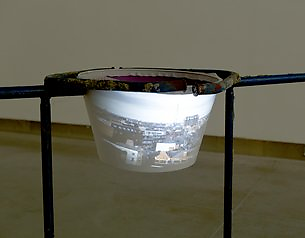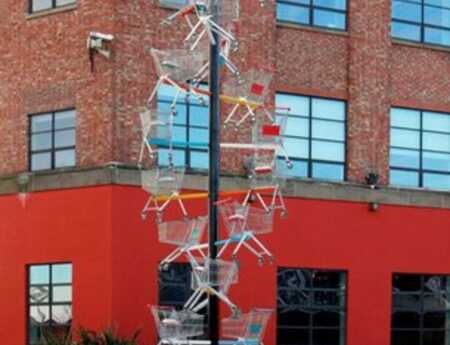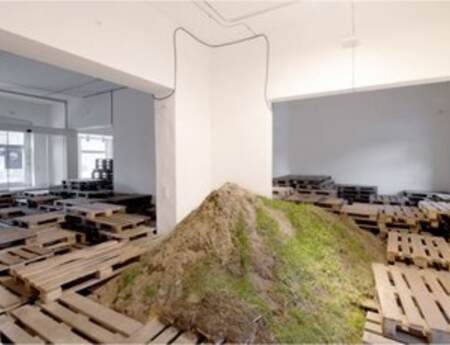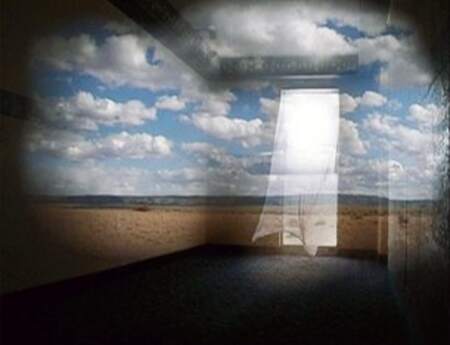Sculpture Today
Curators' thoughts on sculpture being made in Europe today. By Hillary Murray.
In the first half of the 20th century contemporary artists sought to incorporate kinetic techniques into their work in an attempt to overcome the predominantly static nature of art. Victor Vasarely postulated in his "Manifest Jaune" (1955) that works of art should feature the properties of being multipliable and repeatable in series; "the unfolding and temporary qualities suggest their potentially infinite replication" (1).
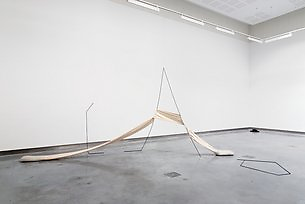
In geometric works such as those created in the 1960s by artists such as Sol Le Witt and Carl Andre, depth awareness comes to the fore in the modular – aspects to the space in which the work occupies are mimicked in an attempt to nullify them as separate. Works are often covered in a white shine to de-colour them, for these artists colour was too expressive a quality. The use of white was an attempt to harness the modality of the space itself and de-materialise the object. Works attended to the gallery itself, and were assumed not have a physical form separate from it (Ref. Sol Le Witt’s Dwan Gallery installation, NY 1966).
In Carl Andre’s installation "Equivalents I-VIII" the work, though serial in form, also consisted of a permutation of related images each the "equivalent of the other" - even though each was distinct. Andre adapted the arrangement of works to each site’s parameter; different types of brick were employed for different situations. While systemic they were internally disordered – a method he called "anaxial symmetry" (2). It became known as an "everyman’s infinite art", at once conceptual yet materially generous, each iteration proffering an inlet into the social environment through recognisable elements. Much of Andres’ work and work involved in the modular makes allusion to the space in which it is created. At each new space a re-creation occurs, therefore the space informs the limitation of the creation itself. In this respect the space is of utmost importance, itself having the responsibility to the creation of artwork.
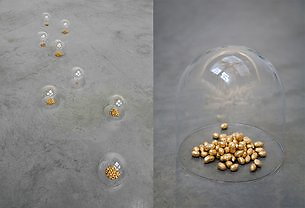
Although Minimalism and Kinetic art are pertinent precursors to the Modular sculpture of today, what seems apparent now is that sculpture is using this grid in a malleable fashion to explore the manner and duration of the gap. The gap itself forces mobility and interaction, for the breadth of it is chosen by the artist, the break in each work used by the view as a way into the work. What determines this choice and is regularity necessary to imply the modular? The difference between the modularity that came in the 20th Century and the modular of today is a defining within this patternation of the life and experience of the artist. The work of contemporary artists often displays a changing configuration depending on where it is exhibited. This adaptation constitutes a form of motion, offering the spectator alternative views and interpretations and aligning the work more closely to the dynamism of physical human experience.
Sculpture today is informed by the differing environments they will encounter whilst also taking into account the human element to each site. Much new sculpture exposes the geometric forms within the spaces she exhibits, creating sculptures that echo the existing format and expand upon it; each work exposing the possibility of space itself. Though informed by a system, the system in question is arbitrary – each unit is interchangeable; the change in form creating an internal dynamic that mimics the physical movement of the work to a different location. Both the inherent motion imposed by the artist and that imposed through the change in location both come together to suggest the genetic nature of the viewer. This biological mannerism serves to exaggerate and question the generalized static grid-like referencing of the environment often encountered in art.
(1) Vasarely, Victor (1955). ‘Notes pour un manifeste, Le Mouvement’, Paris: Galerie Denise Rene
(2) Meyer, James (2001). Minimalism, Art and Polemics in the sixties. Yale University Press
(3) Adorno, Theodor (1970), Aesthetic Theory, Continuum Books

Curators’s selected artists whose work illustrates the described idea on sculpture:
Barbara Knezevic (Australia, 1977)
Mary Ruth Walsh (Ireland)
Molly O’Dwyer (Ireland, 1980)
Isabel Nolan (Ireland, 1974)
Anne Tallentire (Ireland, 1949)
Aleana Egan (Ireland, 1979)
Caoimhe Kilfeather (Ireland, 1979)
Rhona Byrne (Ireland, 1972)
Magnhild Opdol (Norway, 1980)
Lucy Andrews (United Kingdom, 1978)
Hilary Murray
Born and based in Dublin, Ireland
Dr Hilary Murray is a freelance curator based in Dublin. After completing a PhD in Neuroscience at UCD, she then received an MA in contemporary art from NCAD. After working in the Irish Museum of Modern Art for a number of years Hilary was awarded the Curator in Residence position at RUA RED Gallery, Dublin. Here she instigated a series of exhibitions and talks with a focus on perception and consciousness. Hilary continues to prioritise the commissioning of new work and the development of emerging artists. She has been short-listed for the 2013 Irish emerging curator award.
If you would like to contact Hilary Murray, please write to info@sculpture-network.org
